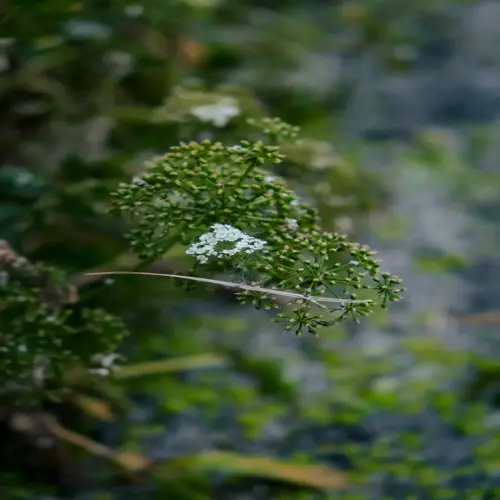7 Essential Steps: How to Grow Rosemary Perfectly

Written by
Michael Sullivan
Reviewed by
Prof. Charles Hartman, Ph.D.How to grow rosemary begins with selecting upright or trailing varieties.
Ensure 6-8 hours of direct sun exposure daily for optimal growth.
Plant in USDA zones 8-10 or use containers in colder climates.
Mix 30% coarse sand into soil for essential drainage requirements.
Harvest only outer stems, never exceeding one-third of plant mass.
Water only when top two inches of soil become completely dry.
Article Navigation
Figuring out how to grow rosemary opens up an entire spectrum of flavors and natural pesticides for your kitchen. This tough herb adds flavor to roasted meats -and also repels mosquitoes from your patio. You can start small with just one plant. And you don't need a green thumb to be successful.
I remember my first rosemary plant thriving in a recycled coffee can, and that experience absolutely taught me that these Mediterranean natives do well in containers. In Ohio, it embraces those new to gardening who are still learning basic soil preparation. If you know how to ensure good drainage, you can eliminate most of the problems that beginners encounter.
Succeed with rosemary by following seven simple steps. First and foremost, focus your attention on sunlight exposure and watering established rosemary. When growing rosemary for culinary purposes, choose varieties with an upright habit, such as Tuscan Blue. Prostrate types of rosemary look great as ground covering. Both produce fragrant needles throughout the year.
7 Essential Steps
Choosing the appropriate rosemary plant will determine your success. Aromatic upright varieties like Tuscan Blue are ideal for cooking due to their flavorful character. Trailing types spill nicely over walls and fences. Both have the same requirements in terms of cultural practices, yet serve different functions in your herb garden. Choose based on your culinary or ornamental needs.
Rosemary thrives in USDA zones 8 to 10, where winter temperatures remain above 15 °F (-9 °C). Use containers if you are growing in a colder region during the winter so that they can be brought inside. This herb likes 6 to 8 hours of direct sunlight daily. Healthy plants will have bright green needles and renewal of growth every season.
Achieve the best soil preparation by mixing thirty percent coarse sand into your garden beds. Add two to three inches of compost to provide nutrients; this replicates Mediterranean conditions and helps keep roots from rotting. I discovered this the hard way after losing plants due to heavy clay soil.
Plant rosemary in the spring, after the risk of frost has passed. Water very generously, but let the soil dry out completely before watering, Harvest sprigs of rosemary regularly to encourage the bush to remain full and bushy. Do not cut woody stems; these will have trouble growing back. Following these steps will result in strong, productive plants year after year.
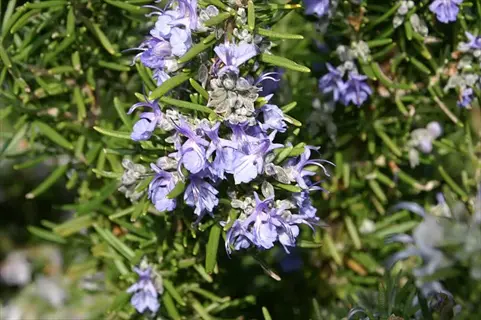
Choose Your Variety
- Fact: Upright rosemary varieties like Arp develop larger leaves perfect for culinary applications such as seasoning roasted meats and vegetables.
- Trailing rosemary creates elegant visual displays in gardens as it gracefully spills over raised bed edges or container sides with fragrant foliage.
- Select upright types for frequent kitchen harvesting needs while choosing trailing varieties for decorative garden borders along pathways.
- Both plant types offer natural pest-repellent properties but differ significantly in growth height, spread, and leaf density characteristics.
- Consider your primary usage goals before selection since upright varieties grow vertically while trailing types spread horizontally across surfaces.
- Local garden nurseries typically stock both varieties during spring planting seasons for convenient home gardener access.

Match Climate to Zone
- Fact: Rosemary survives year-round in ground within USDA zones 8-10 where winter temperatures consistently remain above 15°F (-9°C).
- Gardeners in colder regions must use portable containers allowing indoor relocation when temperatures drop below 30°F (-1°C).
- Observe local frost patterns carefully since rosemary tolerates light frosts but cannot withstand sustained freezing soil conditions.
- Microclimates near south-facing masonry walls extend viable growing ranges by providing crucial extra warmth during cold nights.
- Container plants require gradual week-long acclimation periods when transitioning between indoor and outdoor environments seasonally.
- Document temperature extremes in your specific location to determine appropriate overwintering strategies for optimal plant survival.
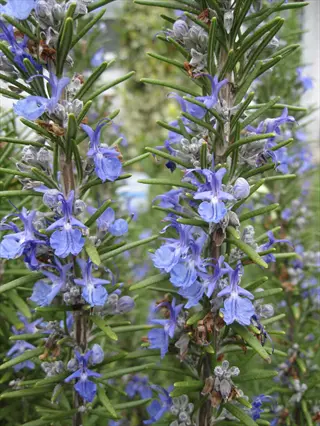
Maximize Sun Exposure
- Fact: Rosemary demands six to eight hours of direct sunlight daily for vigorous growth and maximum essential oil production.
- Position plants in completely unobstructed south-facing locations whether planted in gardens or placed near sunny windows indoors.
- Recognize inadequate light through symptoms like sparse foliage development, yellowing leaves, and diminished aromatic fragrance quality.
- Rotate container specimens weekly ensuring all sides receive equal illumination for balanced symmetrical growth patterns.
- Supplement natural daylight with full-spectrum grow lights during winter maintaining consistent twelve-hour daily photoperiods.
- Morning sunlight combined with afternoon shade protection prevents leaf scorch damage in extremely hot summer climates.

Optimize Soil Drainage
- Fact: Create ideal conditions by blending native soil with thirty percent coarse sand plus compost ensuring rapid drainage.
- Test soil pH levels quarterly maintaining optimal range between 6.0-7.0 using simple kits available at gardening centers.
- Avoid heavy clay compositions which inevitably cause root rot by retaining excessive moisture around delicate root systems.
- Container potting mixes should incorporate perlite or vermiculite guaranteeing water flows freely through drainage holes.
- Apply two to three inch compost layers annually to replenish nutrients without compacting the soil structure.
- Sandy loam mixtures successfully mimic Mediterranean native habitats promoting deep extensive root development.
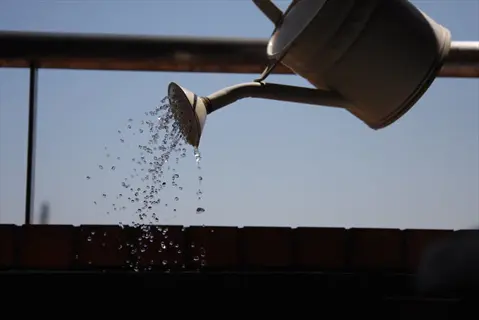
Water Correctly
- Fact: Allow soil to dry completely between waterings verified by inserting finger two inches deep checking moisture.
- Water thoroughly until excess drains from container bottoms then wait until topsoil becomes dry and crumbly.
- Identify overwatering through symptoms including yellow drooping leaves and soft stems indicating potential root rot.
- Reduce irrigation frequency during cool seasons to every two or three weeks matching plant dormancy periods.
- Always use tepid water temperatures avoiding cold shocks which stress plants and inhibit nutrient absorption.
- Container specimens dry significantly faster than in-ground plantings requiring more frequent moisture checks.
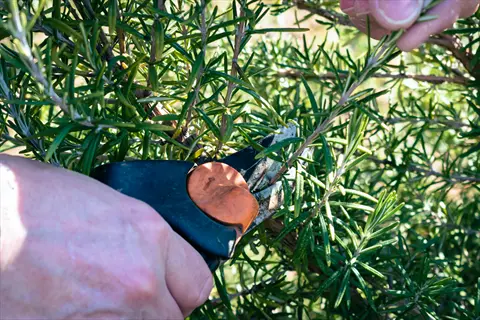
Prune Strategically
- Fact: Trim up to one-third of new growth concentrating on tender green stems during spring and summer.
- Avoid cutting woody lower branches which regenerate extremely slowly and may fail to produce fresh shoots.
- Pinch stem tips regularly to stimulate bushy dense growth patterns preventing unattractive leggy appearances.
- Disinfect pruning shears thoroughly with alcohol solution before each use to prevent disease transmission between garden plants and ensure tool cleanliness.
- Shape trailing varieties by cutting back stems systematically to maintain controlled coverage over edges.
- Remove dead or diseased branches immediately to improve essential air circulation throughout the plant.
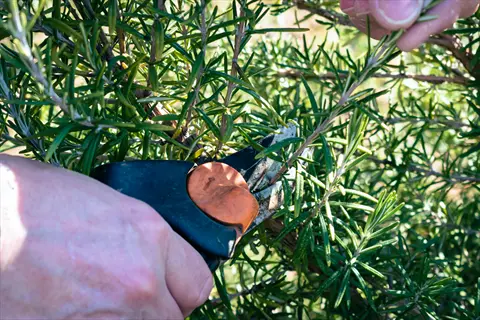
Harvest Regularly
- Fact: Snip outer stems cleanly once they reach six inches length using sharp sanitized scissors.
- Limit harvesting to maximum one-third of the plant allowing adequate recovery time before subsequent collections.
- Conduct morning harvests capturing peak essential oil concentrations in leaves for superior flavor profiles.
- Regular cutting stimulates vigorous new growth significantly increasing overall herb yield throughout seasons.
- For drying purposes bundle four to five sprigs hanging upside down in dark well-ventilated locations.
- Freshly harvested rosemary sprigs maintain optimal quality for one to two weeks when refrigerated in damp paper towels stored inside sealed containers or plastic bags.
Ideal Growing Conditions
By understanding rosemary's natural Mediterranean habitat, you can reproduce those growing conditions at home. Rosemary grows in regions with hot, dry summers and mild winters, similar to those found in coastal Spain or Greece. Familiarize yourself with the climate zones in your area before planting. To achieve the best possible results, consider rosemary's needs.
For vigorous growth, ensure six or more hours of direct sunlight daily. Rosemary can indicate distress with yellowing leaves and scant growth when deprived of light. I placed a plant in partial shade, and it subsequently became leggy within a week. So, move light-deprived plants to brighter locations ASAP.
Blend native soil with thirty percent coarse sand to ensure drainage. Layer two to three inches of compost for nutrition. This will keep your plants fed while stopping root rot. Heavy clay soils will suffocate roots without these additions. By itself, heavy clay soil will suffocate roots.
When the temperature is likely to be less than 30°F (-1°C), take precautions with your plants. A longer exposure (usually 4 hours) to temperatures as low as 15°F (-9°C) is lethal to most plant varieties. Protect planters with frost cloth or take containers indoors during severe cold periods. Always keep an eye on the weather forecast during the winter months.

Climate Zones
- Fact: Rosemary thrives year-round outdoors in USDA hardiness zones 8-10 where temperatures stay above 15°F (-9°C).
- In zones 6-7 plants survive with protective mulch and south-facing wall placements capturing radiant heat during cold spells.
- Gardeners below zone 6 must use containers allowing indoor relocation when temperatures approach 30°F (-1°C).
- Mediterranean native habitats provide ideal conditions with mild wet winters and hot dry summers perfect for rosemary.
- Monitor local microclimates since urban areas or coastal regions often extend viable growing ranges unexpectedly.
- Record seasonal temperature extremes to determine appropriate overwintering strategies ensuring plant survival through winter.
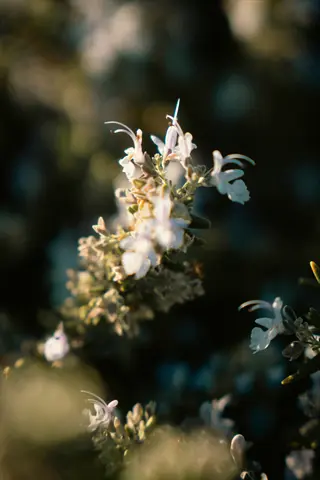
Sunlight Requirements
- Fact: Six to eight hours of direct sunlight daily is essential for robust growth and potent oil production.
- Position plants in completely unobstructed south-facing locations maximizing exposure whether in gardens or indoor settings.
- Signs of inadequate light include sparse leggy growth yellowing leaves and diminished aromatic fragrance quality.
- Supplement natural light with full-spectrum LED grow lights during winter maintaining 12-hour daily photoperiods.
- Rotate container plants weekly ensuring all sides receive equal illumination preventing lopsided development.
- Morning sun exposure combined with afternoon shade prevents leaf scorch in regions with extreme summer heat.
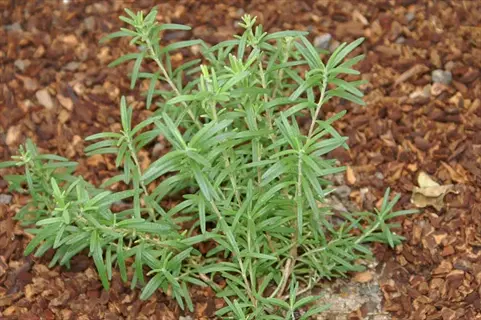
Soil Preparation
- Fact: Create optimal drainage by blending native soil with thirty percent coarse sand plus two to three inches of compost.
- Test soil pH quarterly maintaining levels between 6.0-7.0 using affordable kits available at garden centers.
- Avoid planting when soil temperatures drop below 50°F (10°C) as cold roots cause stunted growth and poor establishment.
- Heavy clay soils suffocate roots causing rot by retaining excessive moisture around delicate root systems.
- Container mixes require added perlite or vermiculite ensuring water flows freely through drainage holes.
- Annual compost top-dressing replenishes nutrients without compacting soil structure or altering drainage properties.
- Sandy loam mixtures successfully replicate Mediterranean native habitats encouraging deep extensive root development.

Container Adaptation
- Fact: Select containers at least 12 inches wide with drainage holes for proper root expansion and moisture control.
- Use lightweight potting mixes containing perlite or vermiculite to ensure adequate drainage while reducing container weight.
- Position containers on casters or plant dollies for easy mobility when transitioning between indoor and outdoor spaces.
- Acclimate plants gradually over 7-10 days when moving between environments to prevent temperature shock and leaf drop.
- Maintain indoor temperatures between 60°F to 70°F (15°C to 21°C) near sunny windows during winter for optimal growth conditions without dormancy.
- Reduce watering frequency to every 2-3 weeks during indoor periods matching the plant's naturally slower metabolic rate in winter.
Planting and Care Guide
Plant rosemary in spring after the soil temperature reaches 60°F (15°C). Fall planting is possible in zones 8 and above before the first frost. Avoid summer heat above 90°F (32°C), as it can stress young source plants. These temperature parameters set up temperatures for the best root development for your herb garden.
For dependable results, propagate using cuttings instead of seeds. Take 3-inch soft stems and dip them in rooting hormone, then plant them in a sandy mix. Seeds can take months and usually don't emerge. Cuttings will find their way to roots in weeks, so you'll be able to grow rosemary faster.
Only prune green stems never more than one-third of growth. Cut on vigorous new shoots. Woody stems will not regrow prolifically. Light, frequent pruning promotes bushy, productive plants. I prune every six weeks, during the active growth period.
The finger test for watering involves inserting a finger to the second knuckle. Water only if the soil is dry and crumbly. Soggy soil can lead to root rot, while arid conditions can put stress on your plants. This simple check can help eliminate the majority of watering errors.
Fertilize the plants with compost tea every six weeks during the growing season. Avoid using chemical fertilizers that promote weak growth. Apply worm castings as a top dressing in early spring. Organic amendments preserve and enhance the flavor and health of the plants.
Planting Timing
- Optimal Period: Plant in spring after last frost when soil temperatures reach 60°F (15°C) or higher for root establishment.
- Fall planting works in zones 8+ where first frost occurs after December allowing 8+ weeks of root development.
- Avoid summer planting when temperatures exceed 90°F (32°C) causing transplant stress and moisture loss.
- Measure soil temperature at 4-inch depth using a probe thermometer before planting for accuracy.
- Time planting with moon cycles: root crops during waning moon for stronger root development.
Watering Techniques
- Finger Test Method: Insert index finger 2 inches deep; water only if soil feels completely dry and crumbly.
- Container plants need water every 5-7 days in summer versus 14-21 days in winter due to evaporation differences.
- Symptoms of overwatering include yellow lower leaves and soft stems indicating potential root suffocation.
- Use drip irrigation or watering cans targeting soil base to keep foliage dry and prevent fungal issues.
- Collect rainwater for irrigation which has ideal pH and lacks chlorine found in tap water.
Fertilization Schedule
- Organic Approach: Apply compost tea every 4-6 weeks during growing season for balanced nutrition.
- Avoid high-nitrogen fertilizers which promote excessive foliage growth at expense of essential oils.
- Top-dress with worm castings in early spring to stimulate growth without chemical inputs.
- Use seaweed extract as foliar spray monthly to enhance disease resistance and flavor intensity.
- Discontinue fertilization 6 weeks before first frost to harden plants for winter dormancy.
Container Maintenance
- Root Management: Repot every 2 years using fresh soil mix to prevent root binding and nutrient depletion.
- Elevate containers on feet or stones to ensure proper drainage after heavy rainfall events.
- Rotate pots weekly to ensure all sides receive equal sunlight exposure for symmetrical growth.
- Clean container exteriors monthly to remove salt buildup from fertilizers affecting soil pH.
- Use breathable fabric pots in humid climates to improve air circulation around root zones.
Seasonal Adjustments
- Winter Care: Reduce watering frequency by 50% during dormancy to match slowed metabolism.
- Apply thick mulch layer around base for in-ground plants when temperatures drop below 40°F (4°C).
- Prune lightly in late winter to remove frost-damaged growth before spring emergence.
- Increase humidity for indoor plants using pebble trays during heated indoor winter months.
- Transition plants gradually over 10 days when moving between indoor and outdoor environments.
Harvesting and Uses
The best time to harvest rosemary is in the morning before the oils peak. Cut stems 4-6 inches long with sharp scissors. Don't harvest more than one-third of the plant's growth. Harvest the soft green stems, but not the woody part of the stem. Use the vigorous new growth as your guide.
For some culinary magic, infuse olive oil with fresh sprigs. Homegrown rosemary has three times the flavor than that at the store. Add to roasted potatoes, lamb, or bread dough. *Remove the leaves before cooking to avoid bitterness from the stems.*
Make an invigorating hair rinse by simmering rosemary sprigs in water. Let it cool, and then apply it after shampooing for shine and hair growth benefits. Mix dried rosemary with coarse sea salt for exfoliating scrubs. These natural beauty products will only cost you pennies compared to retail products.
Fresh sprigs will remain good in refrigerator storage for 10 to 14 days. For drying, hang bundles of rosemary upside down for 2 weeks, after which you can crumble the leaves. Ice cubes made from oil will last 3 months in the freezer. Dried rosemary retains its best quality for 6 months when stored in an airtight jar.
Optimal Harvesting
- Morning Timing: Harvest in early morning when essential oil concentrations peak for maximum flavor and aroma intensity.
- Use sharp sanitized scissors to snip stems cleanly just above leaf nodes to encourage bushy regrowth patterns.
- Select stems 6-8 inches long avoiding woody bases which impart bitterness in culinary preparations.
- Limit harvests to one-third of plant mass allowing two week recovery periods between cuttings.
- For continuous supply rotate harvesting among multiple plants instead of overharvesting single specimens.
Culinary Uses
- Flavor Pairings: Enhance roasted meats poultry potatoes and breads with fresh or dried rosemary sprigs.
- Infuse olive oil by steeping sprigs for two weeks creating aromatic dipping sauces for artisan breads.
- Superiority: Homegrown rosemary contains three times more essential oils than grocery store equivalents.
- Remove leaves from woody stems before cooking to prevent bitter tannins from affecting dish flavors.
- Add whole sprigs to soups and stews removing before serving to avoid overpowering other ingredients.
Beauty Applications
- Hair Rinse: Simmer one cup fresh rosemary in four cups water for twenty minutes strain and cool.
- Apply to scalp after shampooing stimulating follicles without rinsing for enhanced growth and shine.
- Create bath sachets blending dried rosemary with lavender easing muscle tension after gardening activities.
- Infuse rosemary into carrier oils like jojoba creating massage blends for sore muscles.
- Combine with beeswax for herbal salves treating dry skin on hands from soil contact.
Storage Methods
- Fresh Preservation: Refrigerate sprigs in damp paper towels inside sealed containers for ten to fourteen days.
- Air-dry bundles hung upside down in dark ventilated spaces for two weeks until leaves crumble.
- Freeze whole sprigs in olive oil within ice cube trays creating portioned flavor bombs.
- Preserve in vinegar: submerge sprigs in apple cider vinegar for six weeks creating herbal infusions.
- Store dried leaves in airtight jars away from light maintaining potency for six to twelve months.
Decorative Crafts
- Wreath Making: Weave fresh rosemary stems into circular bases with lavender and dried citrus slices.
- Create potpourri blends mixing dried rosemary with rose petals and cinnamon sticks for natural fragrance.
- Insert sprigs into homemade candles releasing subtle herbal aroma when burned during evenings.
- Use as natural confetti for garden weddings providing biodegradable decoration with light scent.
- Craft herbal sachets for drawers combining rosemary with mint to repel moths naturally.
Troubleshooting Issues
Yellow leaves are a sign of overwatering or drainage problems. Check the soil moisture before watering and ensure your pots have drainage holes. Roots will rot when they are submerged in water. Improve drainage by mixing in coarse sand with your soil. A few plants may wilt when sitting in wet soil, which is a common issue.
Fight pests organically with neem oil sprays. Spider mites create fine webbing, and scale insects appear as bumps. Improve airflow between plants to prevent infestations. Release ladybugs to manage aphids. Do not use chemicals that kill beneficial insects.
Shield plants from temperatures below 30°F (-1°C), and bring them indoors when the temperature drops below 15°F (-9°C). Frost damage manifests as blackened leaf tips. Fungal issues, such as powdery mildew, are characterized by a white, powdery coating on leaves. Pest damage can manifest as small holes/insect feeding, or as sticky residue. Ensure accurate identification before treatment.
For fungal issues, use sprays with baking soda. Trim back affected areas and disinfect tools. Prevent recurrence by ensuring proper spacing between plants and watering in the morning. Healthy plants are more resistant to issues. Please pay attention to your plants regularly when it's humid outside, so you can intervene early in the case of any problems.
Yellowing Leaves
- Overwatering: Soggy soil causes root rot; let soil dry completely and repot in well-draining mix.
- Nutrient deficiency shows as uniform yellowing; apply balanced compost tea every 4 weeks.
- Cold shock below 30°F (-1°C) damages cells; move plants indoors or provide frost cover.
- Check drainage holes for blockages preventing water escape leading to stagnant moisture issues.
- Test soil pH ensuring 6.0-7.0 range since alkaline conditions lock out iron absorption.
Pest Infestations
- Spider Mites: Fine webbing on leaves; spray with neem oil solution every 5 days for 2 weeks.
- Whiteflies cluster under leaves; use yellow sticky traps and introduce ladybugs as natural predators.
- Scale insects appear as brown bumps; scrub stems with soft brush dipped in soapy water.
- Improve air circulation by pruning dense growth reducing habitat for pest colonization.
- Prevent reinfestation with monthly preventative sprays of diluted horticultural oil during warm months.
Fungal Diseases
- Powdery Mildew: White coating on leaves; spray baking soda solution (1 tbsp/gallon water) weekly.
- Root rot causes wilting despite wet soil; repot removing blackened roots with sterile shears.
- Avoid overhead watering keeping foliage dry since moisture promotes spore germination.
- Space plants 2-3 feet apart ensuring sunlight penetration inhibits fungal growth.
- Apply sulfur-based fungicide at first sign following label instructions for safe application.
Stunted Growth
- Insufficient Sun: Less than 6 hours daily causes leggy stems; relocate to south-facing exposure.
- Root-bound plants in containers need repotting; gently tease roots and use larger pot.
- Soil compaction prevents oxygen flow; aerate with garden fork and mix in perlite.
- Nutrient lockout from improper pH; test soil and amend with sulfur to lower alkalinity.
- Extreme heat above 95°F (35°C) stalls growth; provide afternoon shade during heatwaves.
Winter Damage
- Frost Burn: Temperatures below 15°F (-9°C) cause severe damage; prune blackened tips after last frost.
- Desiccation from cold winds; wrap pots in burlap or use windbreaks in exposed areas.
- Mulch roots with 3 inches straw before first freeze insulating root zone effectively.
- Indoor transition shock causes leaf drop; acclimate gradually over 7-10 days.
- Water sparingly when dormant (every 3-4 weeks) to prevent root rot in cold soil.
5 Common Myths
Rosemary can be successfully grown in a garden in total neglect and does not require watering or maintenance once it's established.
Even though rosemary is drought-hardy, once established, it certainly requires watchful watering during the establishment phase and when there are dry conditions. Native Mediterranean plants like rosemary have adapted to endure prolonged periods of low rainfall. Rosemary requires consistent moisture for the establishment period (for the first year) when root systems will develop deep roots. If some occasional deep watering doesn't occur during prolonged periods of drought, the plant will shed leaves, become woody, and will produce lower levels of essential oils. The key is to allow the soil to dry between watering but never allow a plant to experience prolonged moisture stress (greater than two weeks) during active growing seasons.
All rosemary varieties grow quickly and reach full size within a single growing season after planting.
Rosemary exhibits significantly slower initial growth compared to many herbs, typically taking two to three years to reach maturity. Upright varieties like Tuscan Blue may grow eight to twelve inches annually under ideal conditions, while prostrate types spread gradually at about four to six inches per year. The first season focuses entirely on root development rather than top growth, with plants often appearing stagnant while establishing below-ground systems. Growth rates accelerate only after the root ball fully occupies its space, which usually requires at least eighteen months in optimal climates with perfect drainage conditions.
Starting rosemary from seeds is the easiest and most reliable method for home gardeners to establish new plants.
Propagation from cuttings or nursery plants proves dramatically more successful than seeds due to rosemary's notoriously low germination rates and slow seedling development. Seeds require specific light and temperature conditions between 65°F and 70°F (18C and 21C) for germination, often taking three to four weeks with inconsistent results. Seedlings grow extremely slowly, needing three months before transplanting compared to cuttings that root in three weeks. Furthermore, many popular cultivars like Arp or Barbecue are hybrids that won't grow true from seed, making vegetative propagation essential for maintaining desired traits.
Rosemary will grow gloriously anywhere, regardless of soil, sun, or climate.
Rosemary has very specific site conditions that replicate its native Mediterranean habitat: full sun at least six hours a day; extremely well-drained sandy-loam soil, pH 6.0-7.0; protection from temperatures below 15 degrees F (-9C). Heavy clay soil results in fatal rotting of the roots in a few weeks. Planting in shaded areas causes leggy growth and increases disease. Humid conditions above 70% increase the risk of fungal issues (like powdery mildew), and wet, cold conditions in winter can be especially deadly. Ideally, you want to find a microclimate that suits your site for meeting the plant's essential growth conditions.
You can take up to half of a rosemary plant at one time without damaging or stressing the plant.
Taking off more than 1/3 of the foliage on any single harvest process is stress that harms the plant to the point of weakening it so the plant may go into destabilization and dieback. Rosemary stores energy reserves in the woody stems, not in the roots, so cutting aggressively reduces photosynthesis and depletes the carbohydrate reserves for new growth. Safe and effective harvesting means taking off only the soft green stem tips and leaving at least 2 sets of leaves below every cut to encourage branching. Never cut into the woody brown stems because they grow back slowly and may not ever develop new growth points after being damaged.
Conclusion
Learn the basics of rosemary care based on three main tenets. Match your climate to Mediterranean conditions, which provide six hours of sunlight. Employ strategic pruning to avoid cutting wood stems. Harvest with restraint, only picking the outer growth. These same principles make success easy for every herb garden.
Recognize the use of rosemary in both your kitchen and bathroom. Fresh sprigs enhance roasting recipes while the dried leaves go into making my homegrown remedies. You can even infuse it into oils for cooking or use it in hair rinses. This herb earns its value with both flavor and natural benefits.
Steady, consistent actions will yield amazing plants; water them consistently using the finger method. Check the leaves weekly for pests. Treat with organic methods such as neem oil when necessary. These habits compound over time, resulting in remarkable growth.
Today, assess how much sunlight your plant is getting. If necessary, relocate pots to a sunnier spot. Then you can harvest some sprigs for dinner tonight. There is no better way than taking action right now to instill confidence in your rosemary journey. Your plant will repay you by flourishing.
External Sources
Frequently Asked Questions
What is the trick to growing rosemary successfully?
The key involves matching its Mediterranean origins: ensure full sunlight exposure, extremely well-draining soil, and proper climate conditions. Avoid overwatering by letting soil dry completely between waterings and protect from freezing temperatures below 15°F (-9°C) for optimal growth.
Does rosemary come back every year?
Rosemary is perennial in USDA zones 8-10 where winter temperatures stay above 15°F (-9°C). In colder zones, it behaves as an annual unless brought indoors or protected with heavy mulch. Container plants survive winters when moved to sheltered locations.
Can I grow rosemary from a cutting?
Yes, propagate using 3-inch softwood cuttings dipped in rooting hormone. Plant in peat-perlite mix, maintain humidity, and provide indirect light. Roots develop in 3-4 weeks, making this method far more reliable than seed propagation for consistent results.
How much sun does rosemary need daily?
Rosemary requires six to eight hours of direct sunlight for vigorous growth and oil production. Insufficient light causes sparse foliage, yellowing leaves, and reduced fragrance. Supplement with grow lights indoors during winter months to maintain health.
Is rosemary better in pots or ground?
Containers allow mobility in colder climates and control over soil drainage. In-ground planting works best in zones 8-10 with sandy soil. Key considerations include:
- Pots: Ideal for temperature control and poor native soils
- Ground: Suitable for permanent warm-climate gardens with amended soil
What should I do with rosemary in fall?
Prepare plants by reducing watering, applying root-zone mulch, and pruning lightly. In cold zones, move containers indoors before frost. For in-ground plants, install windbreaks and cover with burlap during freezing nights to prevent damage.
Can rosemary be grown indoors year-round?
Yes, place near south-facing windows receiving 6+ hours of direct sun. Maintain temperatures between 60-70°F (15-21°C), use well-draining potting mix, and water sparingly. Rotate plants weekly and supplement with grow lights in winter.
How do I make rosemary grow bushier?
Regularly pinch stem tips and prune up to one-third of new growth during spring and summer. Focus on green stems while avoiding woody branches. Strategic cutting stimulates lateral branching and dense foliage development.
Are coffee grounds beneficial for rosemary?
Coffee grounds slightly acidify soil but risk causing fungal issues when overused. They provide minimal nitrogen while potentially compacting soil. Better alternatives include:
- Compost tea for balanced nutrition
- Worm castings for slow-release nutrients
- Coarse sand for drainage improvement
Why does potted rosemary frequently die?
Common failures include poor drainage causing root rot, insufficient sunlight, overwatering, and inadequate container size. Prevent issues by using pots with drainage holes, fast-draining soil mixes, and proper acclimation when moving plants between environments.
